Quantum Physics and Complex Systems
Featured Speakers
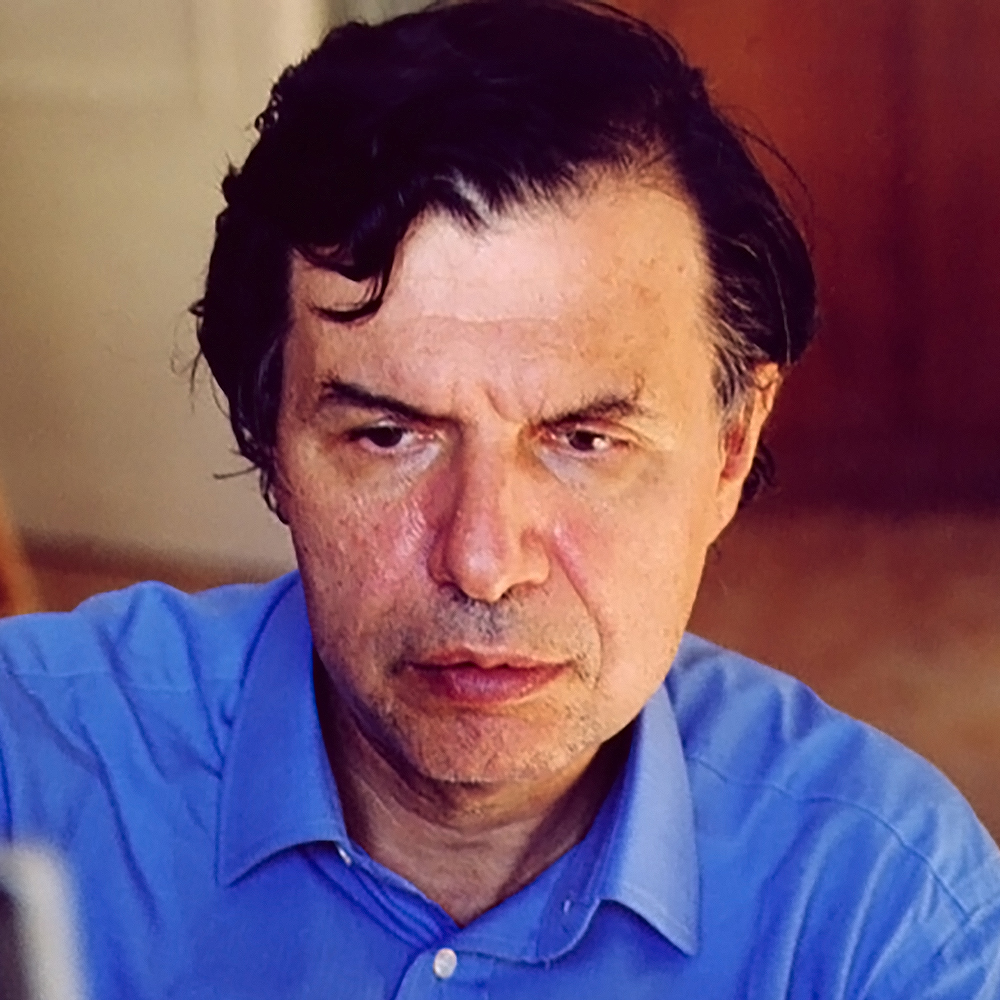
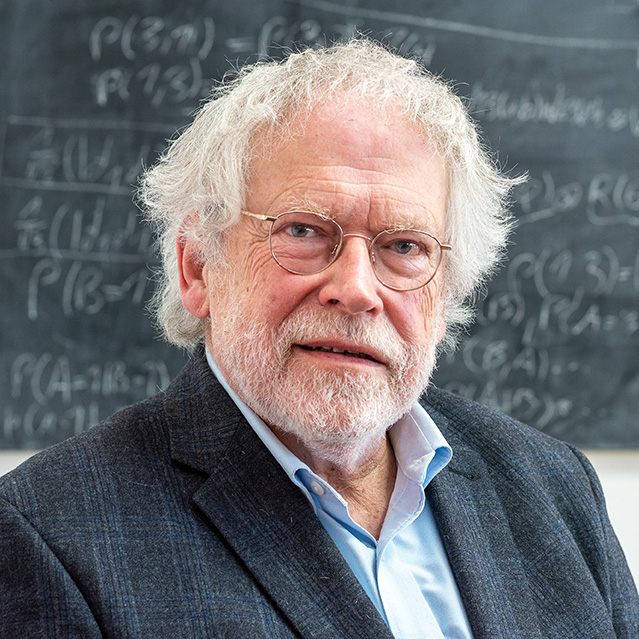
Keynote Speakers
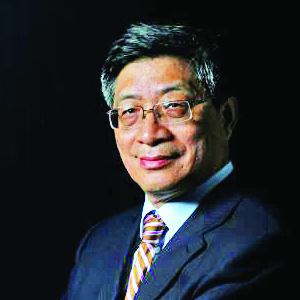
The China Spallation Neutron Source (CSNS) is a multidisciplinary research platform with neutron scattering. The site of CSNS is Dongguan, Guangdong Province. The facility comprises an 80-MeV H- Linac, a 1.6 GeV proton rapid cycling synchrotron (RCS), a tungsten target station, and two experimental halls for 20 neutron instruments. The RCS provides a beam power of 100 kW on the target in phase I. There are three initial instruments in the experimental halls. The construction of CSNS was finished on schedule and reached the specifications. The first neuron beam of CSNS was obtained in August 2017. The construction of CSNS went through the acceptance review organized by the Chinese Academy of Sciences in March 2018, and opened to users. CSNS runs stable with high efficiency. The proton beam power on the target reached the design value of 100kW in February 2020, and increased to 140kW Sept. 2022.
Currently, four neutron instruments are running and open to users. Four more user instruments are under commissioning. Another two will be ready next year. There are 4000 registered users in CSNS, and more than 900 experiments were carried out. Many interesting scientific results were obtained. The phase II of CSNS was approved by Chinese funding agency, including increasing the proton beam power of the accelerators and the target station to 500kW, and the construction of 9 neutron instruments as well as the muon beam and a proton test beam.
The construction, scientific results, and upgrade plan of CSNS will be reported.
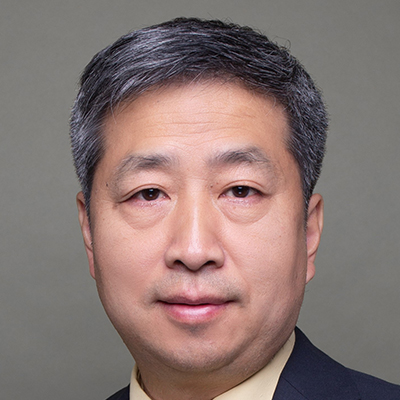
Topological superconductors attract lots of attentions recently, since they are predicted to host Ma-jorana zero mode (MZM), who behaves like Majorana fermion and can be used in fault-tolerant quantum computation relying on their non-Abelian braiding statistics. Currently, most topological superconductors are artificially engineered based on a normal superconductor and the exotic prop-erties of the electronic surface states of a topological insulator. As predicted, MZM in the vortex of topological superconductor appears as a zero energy mode with a cone like spatial distribution. Al-so, MZM can induce spin selective Andreev reflection (SSAR), a novel magnetic property which can be used to detect the MZMs. Here, I will show you that the Bi2Te3/NbSe2 hetero-structure is an ideal artificial topological su-perconductor and all the three features are observed for the MZMs inside the vortices on the Bi2Te3/NbSe2. Especially, by using spin-polarized scanning tunnel-ing microscopy/spectroscopy (STM/STS), we observed the spin dependent tunneling effect, which is a direct evidence for the SSAR from MZMs, and fully supported by theoretical analyses. More importantly, all evidences are self-consistent. Recently, the segmented Fermi surface induced by the Cooper pair momentum was observed in a Bi2Te3/NbSe2 sys-tem. Finally, the strong proximity effect was found in SnTe-Pb heterostructure. The bulk pairing gap and multiple in-gap states induced by topological surface states can be clearly distinguished. The superconductivity of SnTe is consistent with a new type of topological superconductors under the protection of lattice symmetries. Under lattice-symmetry protection, the superconducting SnTe is predicted to possess multiple MZMs in a single vortex. This system provides a platform to study the coupling of multiple MZMs without the need of real space movement of a vortex.
References:
[1] Mei-Xiao Wang, et al., Science 336, 52-55 (2012)
[2] J.P. Xu, et al., Phys. Rev. Lett. 112, 217001 (2014)
[3] J.P. Xu, et al., Phys. Rev. Lett. 114, 017001 (2015)
[4] H.H. Sun, et al., Phys. Rev. Lett. 116, 257003 (2016)
[5] H.H. Sun, Jin-Feng Jia, NPJ Quan. Mater. 2, 34 (2017)
[6] Z. Zhu, et al., Science 374, 1381 (2021)
[7] H. Yang, et al., Adv. Mater. 31, 1905582 (2019)
[8] H. Yang, et al., Phys. Rev. Lett. 125, 136802 (2020)

Out-of-equilibrium systems preserve memories of their formation and training history in a variety of ways allowing for an innovative classification of material and dynamics. I will discuss one case where a cyclically sheared suspension of particles or a charge-density-wave solid (or even a walk in the park!) remembers multiple values from a series of training inputs yet forgets all but two of them at long times despite their continued repetition; however, if noise is added all the memories can be encoded indefinitely! When the packing density is increased, so that the particles become jammed, the evolution takes place in a very rugged energy landscape where scores of local energy minima are visited during each applied oscillation. Nevertheless the jammed solid can readily find the periodic orbits. Memory formation in such a system not only sheds light on how glassy ground states are selected and communicate with one another but also shows a form of memory that allows a new probe of the interactions within a material.

In quantum optics, atoms are usually approximated as point-like compared to the wavelength of the light they interact with. However, recent advances in experiments with artificial atoms built from superconducting circuits have shown that this assumption can be violated. Instead, these artificial atoms can couple to an electromagnetic field in a waveguide at multiple points, which are spaced wavelength distances apart. Such systems are called giant atoms. They have attracted increasing interest in the past few years (e.g., see the review in [1]), in particular because it turns out that the interference effects due to the multiple coupling points allow giant atoms to interact with each other through the waveguide without losing energy into the waveguide (theory in [2] and experiments in [3]). This talk will review some of these developments. Finally, we will also show how a giant atom coupled to a waveguide with varying impedance can give rise to chiral bound states [4].
[1] A.F. Kockum, Quantum optics with giant atoms -- the first five years, https://arxiv.org/abs/1912.13012
[2] A.F. Kockum, G. Johansson, F. Nori, Phys. Rev. Lett. 120, 140404 (2018)
[3] B. Kannan, M. J. Ruckriegel, D. L. Campbell, A. F. Kockum, J. Braumüller, D. K. Kim, M. Kjaergaard, P. Krantz, A. Melville, B. M. Niedzielski, A. Vepsäläinen, R. Winik, J. L. Yoder, F. Nori, T. P. Orlando, S. Gustavsson, and W. D. Oliver, Nature 583, pp. 775 (2020)
[4] X. Wang, T. Liu, A.F. Kockum, H.R. Li, F. Nori, Phys. Rev. Lett. 126, 043602 (2021). [PDF]

The wide range of X-ray analytical techniques available at modern synchrotron radiation sources can reveal information on the composition, the (atomic) structure, and the chemical, magnetic, and electronic states of matter. Their high brightness allows to precisely define the states of the probing light, enabling high-precision measurements in the space and energy domain. This makes synchrotron radiation an ideal tool to understand quantum materials and probe complex systems and study their emergence on a large range of length scales. The new fourth generation of synchrotron radiation sources will enhance the brightness by several orders of magnitude, effectively making them powerful in-situ/operando microscopes for the study of biological, chemical, and physical processes. They can thus help design novel materials solutions for solving the grand challenges of our time.
[1] C. G. Schroer, et al., PETRA IV: the ultralow-emittance source project at DESY. J. Synchrotron Radiat. 25, 1277–1290 (2018).
[2] C. G. Schroer, et al., PETRA IV Conceptual Design Report. 1–280 (2019), URL: https://bib-pubdb1.desy.de/record/426140/files/DESY-PETRAIV-Conceptual-Design-Report.pdf, DOI: 10.3204/PUBDB-2019-03613.
Invited Speakers

Atomic motions – phonons in crystals and excitations in disordered materials - are critical for many material properties, including superconductivity, thermoelectricity, elasticity, ferro-electricity, magneto-elastic coupling, nematicity, etc. They are also intimately connected to many phase transitions, and to general features of liquid and glass behavior. Inelastic x-ray scattering (IXS) [1], unique advantages for investigating atomic dynamics compared to neutron scattering, This has made IXS especially valuable for investigating disordered materials and small samples, with successful measurements possible even from ng (nanogram) samples. Present work now extends to a large variety of materials and sample geometries (single crystals, thin films, near critical liquids, samples in diamond anvil cells, etc,) in a range of conditions (2<T<3000K, P>100 GPa, H < 7 T, etc.)
 The IXS spectrometer at BL43LXU of the RIKEN SPring-8 Center
The IXS spectrometer at BL43LXU of the RIKEN SPring-8 Center
We will discuss the present state-of-the art in IXS and focus on extension of the method to higher resolution and to higher pressures. Higher resolution studies are needed to probe the mesoscale region (10-100 nm length scales) that is important for understanding the cross-over from continuum to atomistic dynamics in disordered (liquid and glass) materials. This is a region that is now mostly inaccessible by other methods. Studies at high pressure allow investigation of fundamental geophysical problems such as the composition and evolution of the earth’s core. In these areas, BL43LXU of the RIKEN SPring-8 Center is now uniquely capable and is leading world effort. Specific examples will be drawn from recent work on (a) liquid water that resolves a multi-decade controversy [2] and sets the stage for a comprehensive interpretation of mesoscale liquid dynamics and (b) studies to extreme (>300 GPa) pressure that place constraints of the composition of Earths‘s inner core [3]. These will be presented in the context of the development of specialized instrumentation that has made these very challenging experiments possible [1,4-7]
baron@spring8.or.jp [1] Baron, in Synch. Light Srcs. & FELS, edited by E. Jaeschke, et al, (Springer International Publishing, Cham, n.d.), https://arxiv.org/abs/1504.01098. [2] Ishikawa, Baron, J. Phys. Soc. Japan 90, 83602 (2021) https://doi.org/10.7566/JPSJ.90.083602 [3] Ikuta, Ohtani, Fukui, Sakai, Ishikawa, Baron, To Be Published. [4] Baron, SPring-8 Inf. Newsl. 15, 14 (2010) http://user.spring8.or.jp/sp8info/?p=3138. [5] Baron, Tanaka, Soutome, Takao, Nakamura,Kobayashi, Fujita, Takahashi, Aoyagi, Shimosaki, Seike, Uchiyama, Ishikawa,Chuang, Kimura, Tanaka, Kitamura, Ishikawa, AIP Conf. Proc. 1741, 020033 (2016) http://dx.doi.org/10.1063/1.4952812. [6] Ishikawa, Ellis, Uchiyama, Baron, J. Synch. Rad. 22, 3 (2015) https://doi.org/10.1107/S1600577514021006. [7] Baron, Ishikawa, Fukui, Nakajima, AIP Conf. Proc. 2054, 20002 (2019) https://aip.scitation.org/doi/abs/10.1063/1.5084562

Glass is everywhere. We use and are surrounded by glass objects which make tangible the reality of glass as a distinct state of matter. Yet, glass as we know it is usually obtained by cooling a liquid sufficiently rapidly below its melting point to avoid crystallisation. The viscosity of this supercooled liquid increases by many orders of magnitude upon cooling, until the liquid becomes essentially arrested on experimental timescales below the ``glass transition'' temperature. From a structural viewpoint, the obtained glass still very much resembles the disordered liquid, but from a mechanical viewpoint, it is as rigid as an ordered crystal. Does glass qualify as a separate state of matter? I will provide a pedagogical perspective on this question using basic statistical mechanical concepts. I will review recent theoretical results suggesting why and how an ``ideal glass'' can indeed be defined as a separate equilibrium state of matter and discuss modern computer simulations trying to analyse this glass state. I will close with some experimental perspectives.

Cuprate and iron-based superconductors are structurally featured with two-dimensional motifs, CuO2 planes and FeAs/Se layers, which are believed to play the key role for superconductivity. Hence it is rational to explore new superconductors by the “block-layer (BL) design”, namely with intercalating various BLs into the superconducting motifs, which actually forms an intergrowth structure. However, it is not easy to evaluate the thermodynamic stability properly because of its complex structure with multiple elements involved.
In this talk, we address this particular issue with a simple BL model, employing the experimental finding of the concepts of lattice match and charge transfer between distinct BLs. We found that the inter-BL charge transfer lowers the internal energy, while lattice match minimizes the elastic energy, both of which together make an intergrowth structure stabilized. This work rationalizes the basic principles of BL design for intergrowth structures, which can be utilized not only for finding new superconducting materials but also for investigating other layered quantum materials.

Colloidal particles can assemble at liquid interfaces, thereby reducing the interfacial energy. Self-assembly of colloidal particles at liquid interfaces has attracted a lot of attention from academia and industry due to its complex energy landscape and potential application in various emerging fields. However, the small size of colloidal particles and the liquid environment make it challenging to explore the self-assembly of colloidal particles at liquid interfaces, especially for those at the nanoscale. In this talk, I will show our recent research advances in using atomic force microscopy (AFM) to study the self-assembly of nanometer-sized colloidal particles at liquid interfaces. With in situ AFM, we show for the first time real-space imaging of sub-20 nm silica particles assembled at the water-oil interface with the help of oppositely charged polymeric surfactants, and the adsorption events of individual silica particles to the water-oil interface, among others. The local packing and dynamic information of these small particles at liquid interfaces revealed by in situ AFM allow us to develop novel soft devices.
References:
[1] Chai, Y.; Hasnain, J.; Bahl, K.; Wong, M.; Li, D.; Geissler, P.; Kim, P. Y.; Jiang, Y.; Gu, P.; Li, S.; Lei, D.; Helms, B. A.; Russell, T. P.; Ashby, P. D., Direct observation of nanoparticle-surfactant assembly and jamming at the water-oil interface. Science Advances 2020, 6 (48), eabb8675.
[2] Chai, Y.; Lukito, A.; Jiang, Y.; Ashby, P. D.; Russell, T. P., Fine-Tuning Nanoparticle Packing at Water-Oil Interfaces Using Ionic Strength. Nano Letters 2017, 17 (10), 6453-6457.
[3] Zhao, S.; Zhang, J.-Y.; Fu, Y.; Zhu, S.; Shum, H. C.; Liu, X.; Wang, Z.; Ye, R.; Tang, B. Z.; Russell, T. P.; Chai, Y., Shape-Reconfigurable Ferrofluids. Nano Letters 2022, 22 (13), 5538-5543.

Over the last decade, theoretical advances have provided an exact solution to the glass problem in the limit of infinite spatial dimension. Interestingly, the dynamical arrest this work predicts is consistent with the mode-coupling theory of glasses, and the ensuing entropy crisis at the Kauzmann transition with the random first-order transition scenario. However, what survives of these features and what other processes contribute to the dynamics of three-dimensional glass formers remain largely open questions. In this talk, I present our recent advances toward a microscopic understanding of the finite-dimensional echo of these infinite-dimensional features, and of some of the activated processes that affect the dynamical slowdown of simple yet realistic glass formers.

Knotting is a common phenomenon in linear objects ranging from macroscopic ropes to DNA, proteins, and other polymers. Physical understanding of knotting phenomena is very limited due to the complexity of knotting. In recent years, we developed a theoretical model to describe the knotting in DNA and other polymers, and revealed many intriguing knot properties. This theoretical model is based on tubes for knots. The tube model assumes that the polymer segments in a knot core are confined within a virtual tube due to topological entanglements and presents a simplified view of knotted polymer conformations that appear irregular and disordered. To materialize the conceptual tube, we generated a large number of knotted polymer conformations by Monte Carlo simulations and superimposed them to obtain the tube. The tube model converts the complicated knotting problem to a tube confinement problem, which can be better tackled by theory and can be used to derive the shape, fluctuations, and free energy of knots.

The progress of the research in material and other fields evokes higher requirements for synchrotron radiation, especially the high brilliance, coherence and high energy X-ray. This kind of hard X-ray would provide the chance to study the structures of real materials under real conditions, as well as the real-time structures with very high spatial, energy and time resolutions.
One of the important tendencies in the development of synchrotron radiation sources is low emmitance. Low emmitance storage rings could provide higher brilliance, which is very important for all kinds of experiments in synchrotron radiation facilities. For example, the emmitance of NSLS-II, a new facility in Brookhaven National Laboratory, is 1.0nmrad. The emmitance of MAX-IV, another new facility in Sweden, goes down to 0.3nmrad. The light source Sirius in Brazil is also a low emmitance machine. Even the existed machines, such as ESRF, APS and SPring-8, have been or will be upgraded to low emmitance ones.
In the meantime, the successful construction of Shanghai Synchrotron Radiation Facility and the great achievements in the research in this facility, inspire the users to build the new and high-performance light sources in China. In the view point of regional factors, the vast in territory of China requires the reasonable distribution of synchrotron radiation facilities which support the scientific and technological research, in order to farthest satisfy the demands of users from different regions.
Based on the above reasons, we are building a new synchrotron radiation facility in the region around Beijing: High Energy Photon Source (HEPS). The designed electron energy of HEPS is 6GeV and the emmitance is lower than 0.1nmrad. This machine can provide the hard X-ray with brilliance higher than 1022ph/s/mm2/mrad2/0.1%BW and photon energy higher than 300keV. Also HEPS keeps the possibility of upgrading to more advanced light source (XERL or diffraction limit storage ring).
One of the main purposes of HEPS is to satisfy the urgent requirements of material sciences, especially the real-time structures of engineering materials under service environment. Certainly, the high brilliance hard X-ray from HEPS can also provide a very good support in other fields of research, such as condensed matter physics, chemistry, environment sciences, life sciences, etc. In Phase I, totally 14 user beamlines will be built for different kinds of research.
The construction of HEPS is going well as planned, even if the outbreak of COVID-19. The civil construction is almost complete, the accelerator and beamlines are in the stage of equipment manufacturing. The whole facility will be in operating at the end of 2025.

The phase space or state space of a system with discrete degrees of freedom can be viewed as a network: each node represents a state, and each edge represents a low-energy transition pathway between two states, e.g., a zero-energy mode. We map the exact ground states of various spin models (the antiferromagnet Ising spins on a triangular lattice, the six-vertex model (i.e., square ice), and ±J spin glasses) and phase spaces of 1D and 2D lattice gases to complex networks. Thus, the network analysis can be applied to phase-space studies. The phase spaces, in turn, establish a new class of complex networks (or random matrices) with unique topology characterized by the novel Gaussian spectral density. Although computer can only handle small systems as their phase spaces are huge, we mathematically prove that their spectral densities become exactly Gaussian when systems become infinitely large. The phase spaces of different models under different boundary conditions share some common features. The systems with long- and short-range correlations in real space exhibit fractal and non-fractal phase spaces, respectively, which supports the conjecture in Tsallis statistics. The connectivity distribution, community structures, and fractal structures change drastically at the ferromagnetic-to-glass phase transition. The network community analysis provides a way to describe and simplify the complex entropy landscape.
One by-product in the phase-space construction is a one-to-one mapping between the 2D six-vertex model and 3D sphere stackings. In contrast to cube stackings (i.e., antiferromagnet Ising spins on 2D triangular lattice) which has been intensively studied in combinatorics as plane partition, the sphere stacking has similar combinatorics problems but rarely been explored. We find that some sphere packing follows a mock theta function. We conjecture all models could be mapped to stackings in high dimensions.

References:
[1] Phase-space networks of geometrically frustrated systems, Yilong Han*, Phys. Rev. E 80, 051102 (2009)
[2] Phase-space networks of the six-vertex model under different boundary conditions, Yilong Han*, Phys. Rev. E 81, 041118 (2010)
[3] Self-similarity of phase-space networks of frustrated spin models and lattice gas models, Yi Peng, Feng Wang, Michael Wong, and Yilong Han*, Phys. Rev. E 84, 051105 (2011)
[4] Ground-state phase-space structures of two-dimensional ±J spin glasses: A network approach, Xin Cao, Feng Wang, and Yilong Han*, Phys. Rev. E 91, 062135 (2015)
[5] Geometric frustration in buckled colloidal monolayers, Y. Han*, Y. Shokef*, A. Alsayed, P. Yunker, T. C. Lubensky and A. G. Yodh, Nature 456, 898-903 (2008)

Neutron beam is one of quantum beams widely known for materials characterization due to its unique properties. Neutrons are used to investigate stresses and crystallographic microstructures inside engineering materials, taking advantage of their large penetrating power and the ability to see the arrangement of atoms by diffraction methods. Pulsed neutron diffraction with the time-of-flight method is suitable for microscopic structural observation as a bulk average behavior because of the simultaneous measurement of multiple Bragg peaks. Careful analysis of the Bragg peaks in a neutron diffraction pattern can reveal important structural details of a sample material such as internal stresses, phase conditions, dislocations, texture etc. Such information is often crucial in engineering applications and the ability to carry out either ex-situ or in-situ measurements makes neutron diffraction particularly useful in this respect. The large penetrating power of neutrons also allows in-situ investigation of crystallographic information on engineering materials under various environments, including operando monitoring during deformation at a wide temperature range from cryogenic to high temperatures, thermo-mechanical processes, and so on.
The pulsed neutron diffraction with the time-of-flight method will be briefly introduced, and a pulsed neutron diffractometer for engineering materials studies in J-PARC with some highlighted researches using operando observations will be introduced.

Loading quantum information deterministically onto a quantum node is an important step towards a quantum network. Here, we demonstrate that coherent-state microwave photons, with an optimal temporal waveform, can be efficiently loaded onto a single superconducting artificial atom in a semi-infinite one-dimensional (1D) transmission-line waveguide. Using a weak coherent state (the number of photons contained in the pulse N < < 1) with an exponentially rising waveform, whose time constant matches the decoherence time of the artificial atom, we demonstrate a loading efficiency of 94.2% from 1D semi-free space to the artificial atom. The high loading efficiency is due to time-reversal symmetry: the overlap between the incoming wave and the time-reversed emitted wave is up to 97.1%. We also theoretically show that Fock-state microwave photons can be deterministically loaded with an efficiency of 98.5% due to an overlap of 99.3% between input and time-reversed emission. Our results open up promising applications in realizing quantum networks based on waveguide quantum electrodynamics.

Given that various synthetic topological matter have been realized with ultracold atoms, the atomic system has become one of most promising platforms for examining topological phases of matter in unprecedented environments, such as those with dissipation. Although such environments are ubiquitous in nature, it is still challenging to exploit them to manipulate the property of the quantum system in which emergent phenomena, such as exceptional points/rings, skin effects, localization, and critical phases, occur. In this talk, I discuss our recent realization of dissipative spin-orbit couplings (SOCs) in bulk and lattices with ultracold fermions.
In bulk, we realize non-Hermitian spin-orbit-coupled quantum gases and observe a parity-time symmetry- breaking transition across the exceptional point (EP) as a result of the competition between SOC and dissipation. The realized EP of the non-Hermitian band structure exhibits chiral response when the quantum state changes near the EP. Recently, we generalize this non-Hermitian SOC scheme to two-dimensional Bloch bands, in which the EP emerges at the end of Fermi arc in the presence of dissipation. By using spin-resolved Rabi spectroscopy in this lattice system, we not only identify the exceptional point but also measure a complex energy-gap spectrum showing the evidence of non-Hermitian skin effect in a two-dimensional lattice system.

The symmetry breaking ascribed to the evolution of an order parameter is one of the most important concepts in materials physics. Representative examples are symmetry breakings in “ferroic” materials such as the symmetry breaking of time reversal in ferro-magnets and that of space inversion in ferro-electrics. Thus, one can find that this concept contributes to not only fundamental science but also materials’ functionalities available for device applications. Furthermore, recent research developments of “multiferroic” materials with broken time-reversal and space-inversion symmetries have triggered extensive studies on unconventional ferroic materials such as “ferro-toroidic” and “ferro-axial” materials.
In the case of ferro-toroidal order whose order parameter is a toroidal moment, that is, the sum of the cross product of spin and its position vector. Most typically, the toroidal moment is generated by head-to-tail arrangement of magnetic dipoles, which breaks both the time-reversal and space-inversion symmetries. When we replace magnetic dipoles in toroidal moment with electric dipoles, ferro-axial moment is generated. In the ferro-axial order, a rotational electric-dipole arrangement breaking some mirror symmetry, the so-called ferro-axial moment, is an order parameter.
In this presentation, we show symmetry-dependent magnetic, electric, and optical phenomena characteristic of unconventional ferroic orders such ferro-toroidal, ferro-axial, and ferro-quadrupole orders. The phenomena include magnetoelectric effect, nonreciprocal directional dichroism, and electrogyration. Furthermore, in general, ferroic materials bear “domain” structures, that is, spatial distributions of order parameters. However, observations of domain structures in unconventional ferroic materials are not straightforward. Here, we also show ways to spatially visualize domain structures in such unconventional ferroic materials.

The discovery of superconductivity in infinite-layer nickelates has engendered reviving interest in the study of a cuprate-analog system [1,2]. Notably, superconducting nickelates display signatures of intriguing similarities and distinctions to the cuprates in their phase diagrams, antiferromagnetic interactions, rare-earth dependence, and superconducting anisotropy, among others. Partially owing to the non-trivial challenges in materials synthesis and their thin-film nature, experimental demonstration of the intrinsic properties of this family of materials has still been limited [3,4]. In this talk, I will present our latest developments in alternative synthesis approaches for the high-quality Nd-series of the materials system and probing of their electronic structure/properties, in a broader context of the role that chemical and structural environments can play. Our approach may offer new opportunities to overcoming the difficulties in stabilizing this otherwise thermodynamically unstable family of materials.
[1] D. Li et al., Nature 572, 624 (2019).
[2] D. Li et al., Physical Review Letters 125, 27001 (2020).
[3] K. Lee et al., APL Materials 8, 041107 (2020).
[4] K. Lee et al., arXiv: 2203.02580 (2022).
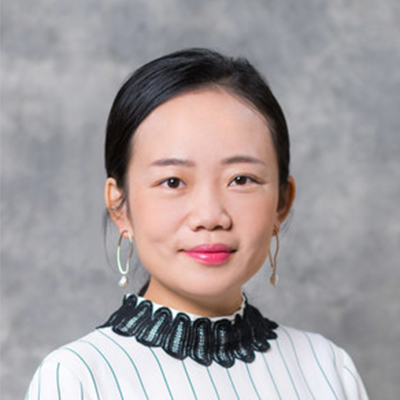
Single molecule techniques have made a profound impact in uncovering the structure-function relationships of molecular materials. Among them, the scanning tunneling microscope break junction (STM-BJ) technique has emerged as a powerful platform for observing quantum mechanical phenomena at nanoscale and for testing electron transport theory at molecule-metal interfaces. In this talk, I will describe single molecule measurements of cyclic silanes performed using a STM-BJ technique and related density functional theory calculations. We demonstrated that we can achieve an ultimate molecular insulator in a functionalized bicyclo[2,2,2]octasilane moiety by the use of complete destructive quantum interference effect in a sigma-conjugated backbone. This work highlights a sigma interference-based approach in creating insulating molecular materials.

In this talk, I will discuss our recent work on many-body localization (MBL) for interacting one-dimensional lattice fermions in random (Anderson) and quasiperiodic (Aubry-Andre) models, focusing on the role of interaction range. We obtain the MBL quantum phase diagrams by calculating the experimentally relevant inverse participation ratio (IPR) at half-filling using exact diagonalization methods and extrapolating to the infinite system size. For short-range interactions, our results produce in the phase diagram a qualitative symmetry between weak and strong interaction limits. For long-range interactions, no such symmetry exists as the strongly interacting system is always many-body localized, independent of the effective disorder strength, and the system is analogous to a pinned Wigner crystal. We obtain various scaling exponents for the IPR, suggesting conditions for different MBL regimes arising from interaction effects.

Physicists are used to describing magnetism with models of interacting spins on lattices of magnetic ions. However, recent developments in topological quantum chemistry reveal the fact that a low-energy description of electrons are not necessarily “ionic”, but can instead feature other forms of tight-binding bases. In this talk, I will present an experimental reality of such a kind in the near-ferromagnetic binary compound of MnSi, by showing that the fundamental magnetic units are extended “molecular orbitals” consisting of three Mn atoms each. The key experimental evidence comes from inelastic neutron scattering measurements of the magnetic form factor, and it is further corroborated by first-principles calculation of the magnetic Wannier orbitals. The demonstrated interconnected magnetic molecular orbitals might change our way of looking at magnetism in quantum materials in which structural symmetry, electron itinerancy and correlations act in concert.

The capacity degredation in layered Ni-rich LiNixCoyMnzO2 (x ≥ 0.8) cathode largely originated from drastic surface reactions and intergranular cracks in polycrystalline particles. Herein, we report a highly stable single-crystal LiNi0.83Co0.12Mn0.05O2 cathode material, which can deliver a high specific capacity (~209 mAh g–1 at 0.1 C, 2.8–4.3 V) and meanwhile display excellent cycling stability (>96% retention for 100 cycles and >93% for 200 cycles). By a combination of in situ X-ray diffraction and in situ pair distribution function analysis, an intermediate monoclinic distortion and irregular H3 stack are revealed in the single crystals upon charging–discharging processes. These structural changes might be driven by unique Li-intercalation kinetics in single crystals, which enables an additional strain buffer to reduce the cracks and thereby ensure the high cycling stability.

Nowadays, solar industry becomes the fastest growing industry due to the rising demands to solve the energy crisis and environmental problems. Third-generation solar cells, such as organic and perovskite solar cells are all relying on a semiconducting thin-film active layer to harvest the solar energy. The bulk morphology of the active layer in terms of crystal structure, orientation, grain size and nanophase separation behaviors is known to be critical to the solar cell device performance. Here, we will present our recent studies on the process-structure-device correlation of organic and perovskite solar cells. In these studies, state-of-art grazing incidence scattering techniques using X-rays and neutrons were employed for various purposes, such as grazing incidence wide-angle/small-angle X-ray scattering (GIWAXS/GISAXS), grazing incidence transmission small-angle X-ray scattering (GTSAXS), grazing incidence neutron scattering (GISANS). These techniques can also be applied in material science, chemistry, biology and condensed matter physics studies. By modifying the wavelength of the probing beam and the experimental geometry, a variety of sample types, such as solutions, powders, surfaces and thin films, can be studied, covering wide length scales as well as versatile dynamic and kinetic behaviors.
Keywords:
Organic Photovoltaics, Perovskite Solar Cells, GIWAXS, GTSAXS, GISANS
Reference:
[1] X. Xia, T-K. Lau, X. Guo, Y. Li, M. Qin, K. Liu, Z. Chen, X. Zhan, Y. Xiao, P. F. Chan, H. Liu, L. Xu, G. Cai, N. Li, H. Zhu, G. Li, Y. Zhu, T. Zhu, X. Zhan, X-L. Wang and X. Lu*, Uncovering the Out-of-plane Nanomorphology of Organic Photovoltaic Bulk Heterojunction by GTSAXS, Nature Communications, 2021, 12, 6226.
[2] M. Qin, H. Xue, H. Zhang, H. Hu, K. Liu, Y. Li, Z. Qin, J. Ma, H. Zhu, K. Yan, G. Fang, G. Li, U-S. Jeng, G. Brocks, S. Tao*, and X. Lu*, Precise Control of Perovskite Crystallization Kinetics via Sequential A-site Doping, Advanced Materials, 2020, 2004630.
[3] M. Qin, K. Tse, T.-K Lau, Y. Li, C.-J. Su, G. Yang, J. Chen, J. Zhu, U-S. Jeng, G. Li, H. Chen, and X. Lu*, Manipulating the Mixed-Perovskite Crystallization Pathway Unveiled by In Situ GIWAXS, Advanced Materials, 2019, 1901284.
[4] J. Mai, Y. Xiao, G. Zhou, J. Wang, J. Zhu, N. Zhao, X. Zhan, X. Lu*, Hidden Structure Ordering along Backbone of Fused-ring Electron Acceptors Enhanced by Ternary Bulk Heterojunction, Advanced Materials, 2018, 1802888.

The electronic structure of quantum materials essentially determines the macroscopic electrical, magnetic, and optical properties of materials. The electromagnetic coupling between the charge, spin, lattice, orbital degrees of freedom in materials can lead to the emergence of a variety of important phenomena in condensed matter, which can be utilized in optical sensing, information transmission, imaging, green electronics, and quantum information processing, etc. The related energy excitation between different freedoms usually can be described by quasiparticles such as Dirac fermions, Weyl fermions, phonons, polarons, excitons, etc. Angle-resolved photoemission spectroscopy (ARPES) has proven to be particularly effective for directly measuring the electronic structure of condensed matter in momentum space since it allows direct detection of the single-particle spectral function that dominates the formation of new quasiparticles. In this talk, we will discuss our recent research about investigation of different quasiparticles in quantum materials with ARPES.
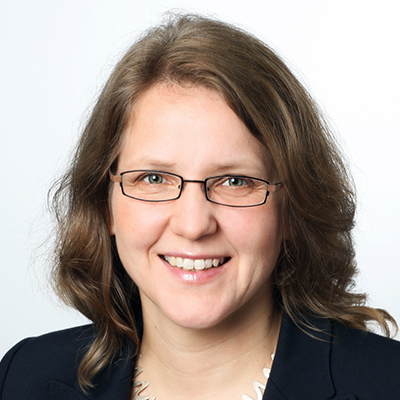
Quantum technologies promise a change of paradigm for many fields of application, for example in communication systems, in high-performance computing and simulation of quantum systems, as well as in sensor technology. Current efforts in photonic quantum target the implementation of scalable systems, where the realization of controlled quantum network structures is key for many applications.
Here we present the progress for three differing approaches to overcome current limitations for the realization of multi-dimensional photonic systems: non-linear integrated quantum optics, pulsed temporal modes and time-multiplexing..

The magnetic tri-halide compounds continue to attract great interests has hosts of an array of fascinating quantum phenomena. In this talk, I will focus on three canonical members of this class of materials: FeCl3, YbCl3 and CrCl3. Although all comprise a honeycomb lattice of magnetic ions, details of the exchange coupling and magnetic moment yield striking differences in physical behavior. In the absence of an applied magnetic field YbCl3 has a long range ordered antiferromagnetic phase with a broad continuum of excitations. Inelastic neutron scattering measurements along with a spin wave theory accounting for both longitudinal transverse fluctuations reveal that YbCl3 is perhaps the best realization to date of a nearest neighbor Heisenberg model on the honeycomb lattice and further reveal features in the continua which have long been expected in quantum magnets, but which have previously eluded observation. On the other hand, while CrCl3 is also an example of a 2D honeycomb lattice, each honeycomb lattice plane contains ferromagnetically aligned spins and exhibits an excitation spectrum with well-defined Dirac magnons. This material serves as a test case for determining topological magnons and provides as clear demonstration of how to accurately determine a topological magnetic gap using inelastic neutron scattering. Details of experimental resolution functions must be incorporated in the analysis to accurately understand the energy scale of anisotropy terms in the Hamiltonian. While FeCl3 also has a honeycomb structure, remarkably strong further neighbor interactions drive completely different behavior from the previous examples. We find evidence for the existence of a spiral spin-liquid state in this compound above the ordering temperature.
[A portion of this research used resources at the Spallation Neutron Source, a DOE Office of Science User Facility operated by the Oak Ridge National Laboratory.]

The generation of high-quality photon sources has been a long-sought goal in modern quantum communication and computation. The semiconductor quantum dot (QD) has been successfully demonstrated as a potentially scalable and on-chip integration technology to generate the triggered photon streams. However, the randomicity of the photon streams emitted from the QD seriously hinders the realization of highly-efficient on-demand controllable quantum light sources. In this talk, I will firstly present the strongly-entangled photon pair sources with high brightness and indistinguishability by combining GaAs QDs with new broadband photonic nanostructures: circular Bragg resonators on highly efficient broadband reflectors (CBR-HBR), which was praised as “an important milestone” in this field. Then, I will talk about the on-demand spin-state manipulation of single-photon emission from quantum dot integrated with metasurface, and the bright solid-state sources for single photons with orbital angular momentum.

Due to their limited coupling to charge noises, spin qubits have been the main candidates for robust quantum information processing in semiconductor quantum dot devices. Among the proposed spin qubits, singlet-triplet qubits stand out due to their all electrical control scheme. Although high-fidelity single-qubit operations have been experimentally demonstrated, the fidelities of two-qubit capacitive gates are limited. In contrast to conventional two-electron singlet-triplet qubits, we propose to host the capacitive gates between a pair of four-electron singlet-triplet qubits, each of which is operated in the detuning regime where the electron occupation is asymmetric. Using full configuration interaction calculations, we show that the non-monotonic behavior of the dipole moment of each qubit leads to an optimal operating point where the capacitive coupling is maximal and the effective exchange energies are first-order insensitive to charge noises. Numerical simulations under realistic charge noises and hyperfine noises show that operating CPHASE gates at the optimal point can achieve fidelities above 99%.
[1] G. X. Chan and X. Wang, Phys. Rev. B 106, 075417 (2022)

Combining principal component analysis (PCA) of X-ray spectra with MD simulations, we experimentally reveal the existence of three basic components in water. These components exhibit distinct structures, densities, and temperature dependencies. Among the three, the two major components correspond to the low-density liquid (LDL) and the high-density liquid (HDL) predicted by the two-component model, and the third component exhibits a unique 5-hydrogen-bond configuration with ultra-high local density. As the temperature increases, the LDL component decreases and the HDL component increases, while the third component varies non-monotonically with a peak around 20 °C to 30 °C. The 3D structure of the third component is further illustrated as the uniform distribution of five hydrogen-bonded neighbors on a spherical surface. Our study reveals experimental evidence for water's possible three-component structure, which provides a fundamental basis for understanding water's special properties and anomalies.

Borrowing the fluctuation-dissipation theorem of equilibrium systems, we obtain a temperature-like quantity TIS for inherent structures. Interestingly, although it is calculated from nonequilibrium systems, TIS agrees with characteristic temperatures of the equilibrium counterparts, which are crystallization temperature of crystal-formers and onset temperature of glass-formers. We further find that TIS agrees with effective temperatures of slow-evolving systems, such as aging glasses, shear flows, and self-propelled flows. Therefore, previously discussed effective temperatures of slow-evolving systems are actually melting or onset temperatures, which are thus not thermodynamic temperatures. Our work shows the underlying connections between nonequilibrium and equilibrium systems and evidences the equivalence between onset and melting temperatures.

REFERENCES
[1] J. Zhang,# W. Zheng,# S. Zhang, D. Xu, Y. Nie, Z. Jiang, and N. Xu*, Sci. Adv. 2021, 7, eabg6766.

Moiré superlattices arising from twisted van der Waals stacking of 2D materials has provided a powerful tool towards designer quantum materials that can extend the exotic properties of the building blocks. For band edge carriers located at the Brillouin zone corners (valleys), the interlayer hopping features sensitive dependence on the atomic registry between the constituting layers. In twisted TMDs homobilayers, such coupling in the moiré pattern manifests itself as a location-dependent Zeeman field acting on the active layer pseudospin, giving rise to emergent gauge field for spin/valley manipulation [1-3]. In moiré patterns distorted by non-uniform strains, the interplay of moiré interlayer coupling and strain togetherleads to non-Abelian Berry phase effects [4]. I will also show that the interlayer tunnelling across the twisted interface leads to a genuine linear response charge Hall effect in the presence of time reversal symmetry [5].
The work was supported by Research Grant Council of HKSAR (17306819, AoE/P-701/20, HKU SRFS2122-7S05), and the Croucher Foundation.
[1] Hongyi Yu, Mingxing Chen, Wang Yao, Giant magnetic field from moire induced Berry phase in homobilayer semiconductors, Natl. Sci. Rev. 7, 12 (2020).
[2] Dawei Zhai and Wang Yao, Theory of tunable flux lattices in the homobilayer moire of twisted and uniformly strained transition metal dichalcogenides, Phys. Rev. Materials 4, 094002 (2020).
[3] Dawei Zhai and Wang Yao, Ultrafast control of moiré pseudo-electromagnetic field in homobilayer semiconductors, Natural Sciences 2(2), e20210101. (2022).
[4] Dawei Zhai and Wang Yao, Layer Pseudospin Dynamics and Genuine Non-Abelian Berry Phase in Inhomogeneously Strained Moiré Pattern, Phys. Rev. Lett. 125, 266404 (2020).
[5] Dawei Zhai, Cong Chen, Cong Xiao and Wang Yao, Layer-Contrasted Hall Effect in Twisted Bilayers with Time Reversal Symmetry, arXiv:2207.14644 (2022).

Ensembles of atomic qubits can exhibit quantum advantages in communication, sensing or precision measurement, and quantum simulation or computation. This talk will introduce the basics of such quantum science and technology. We will report recent research efforts on two frontier topics: (1) enhanced sensing precision beyond classical limit in linear interferometry by improved signal-to-noise ratio with entangled atoms with suppressed quantum noise; or in nonlinear interferometry by noiseless signal amplification with interaction-based-readout from coherent disentanglement dynamics; (2) arrays of Rydberg atom qubits can be assembled from bottom up into systems sizes capable of quantum supremacy, demonstrating quantum information processing tasks beyond the capabilities of all current computers.

I will by reviewing the microscopic theory of linear elasticity in amorphous solids which, from first-principles consideration of non-centrosymmetry in the particle contact environment, leads to mathematical predictions of elastic moduli in quantitative parameter-free agreement with numerical simulations of random jammed packings [1]. This theory fully accounts for the extra non-affine displacements which arise due to the lack of centrosymmetry that leads to force imbalance in the so-called "affine" position, with characteristic negative (softening) contributions to the shear modulus entirely due to non-affine displacements.
I will then show how the theory can be systematically extended to linear viscoelasticity, again in excellent parameter-free agreement with mechanical spectroscopy (oscillatory rheology) in simulations of polymer glass rheology [2]. The same non-affine deformation theory is able to mathematically predict and explain the ubiquitous inverse cubic dependence of low-frequency shear modulus on confinement size for confined liquids and amorphous solids [3]. I will then show that non-affinity of particle motions gives rise to well-defined topological defects (dislocation-like topological defects, DTDs) which have recently been discovered in the displacement field of model amorphous solids [4] and later confirmed in [5]. The norm of the associated Burgers vector of these defects can be used as an accurate predictor of the onset of plastic flow and yielding of the amorphous material, and, in combination with Schmid's law, it can explain the phenomenon of shear banding via self-organization of DTDs in slip systems at 45 degrees with respect to flow direction [4]. Broader implications of a unifying topological field theory of liquids and the liquid-solid transition will also be mentioned [6].
[1] A. Zaccone and E. Scossa-Romano, Phys. Rev. B 83, 184205 (2011)
[2] V. V. Palyulin, C. Ness, R. Milkus, R. M. Elder, T. W. Sirk, A. Zaccone, Soft Matter 14, 8475-8482 (2018)
[3] A. Zaccone and K. Trachenko, PNAS 117, 19653-19655 (2020)
[4] M. Baggioli, I. Kriuchevskyi, T. W. Sirk, A. Zaccone, Phys. Rev. Lett. 127, 015501 (2021)
[5] Z. W. Wu, Y. Chen, W.-H. Wang, W. Kob, L. Xu, arXiv:2209.02937 (2022)
[6] M. Baggioli, M. Landry, A. Zaccone, Phys. Rev. E 105, 024602 (2022)

A neural network contains a large number of parameters that are fitted to the training data. This is done by numerically minimizing the loss function, a function that quantifies the deviation of the fit from the actual training data. A highly desired goal in this field is to design neural networks with good generalization performance, i.e., one that performs well for data points not present in the training data set. The machine learning community generally believed that a flatter minimum of the loss function has better generalization performance than a sharper minimum. Here we show that such a correlation generally exists but is not perfect. We do this by calculating the entropy (logarithm of the volume in the parameter space) versus the accuracy in training and test datasets using the Wang-Landau Monte Carlo algorithm. We show that the test accuracy of the maximum-entropy state is higher than that of a typically-trained state, but is still below the training accuracy. Our current results are obtained from a very small-scale problem (a spiral dataset with about 40 data points and a fully connected neural network with a few hundred parameters), but we will also briefly discuss future plans to study larger-scale problems.

Quantum states of the light, e.g., single photons, entanglement and squeezing, opens up a new avenue for spectroscopy by utilizing the parameters of quantum optical fields as novel control knobs and through the variation of photon statistics. With the advance of cavity quantum electrodynamics and light source technology, imaging and controlling the electron and vibrational motions of molecules can be achieved, towards unprecedented resolution and precision, not accessible by the classical light pulses. In this talk, I will present our recent works on multidimensional spectroscopy using quantum states of light, including 2D photon-coincidence counting and Raman spectroscopy. Microscopic models for molecular relaxation using reduced density matrix will be incorporated for a unified understanding of the signals.